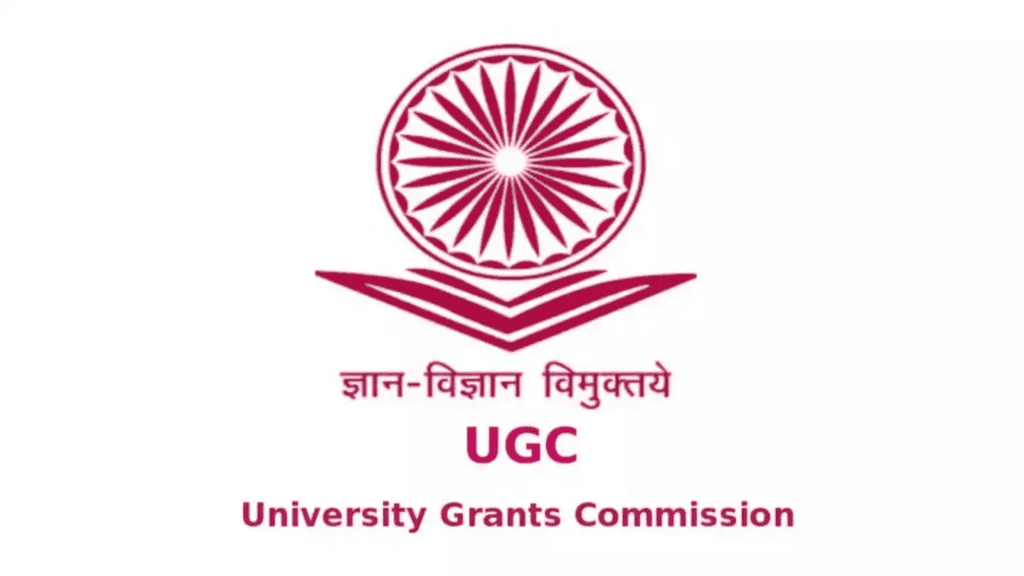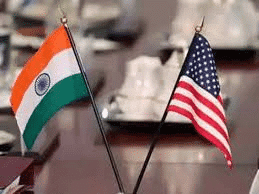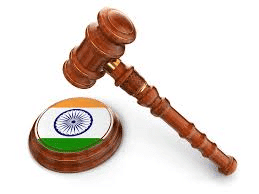UPSC Exam > UPSC Notes > Current Affairs & Hindu Analysis: Daily, Weekly & Monthly > The Hindu Editorial Analysis- 21st January 2025
The Hindu Editorial Analysis- 21st January 2025 | Current Affairs & Hindu Analysis: Daily, Weekly & Monthly - UPSC PDF Download

UGC’s Draft Regulation has Serious Constitutional Issues
Why is it News?
The University Grants Commission (UGC) has put forward a draft regulation concerning the selection and appointment of vice chancellors (VCs) in universities.
- This proposal has faced opposition from non-BJP-led state governments, who argue that it infringes upon the federal principles enshrined in the Constitution.
Details of the Proposed Amendment by UGC
- The UGC's amendment aims to update Regulation 2010, which governs VC appointments, by expanding the eligibility criteria.
- Previous Criteria: Under the old regulation, only academicians with at least 10 years of experience as professors were qualified for the role of vice chancellor.
- New Proposal: The revised proposal includes professionals from various fields such as industry, public administration, or public policy, provided they have 10 or more years of experience.

Objective of the UGC Act, 1956
- The UGC Act was established to coordinate and set standards in universities across India.
- Its primary goals include promoting university education and ensuring quality in teaching, research, and examinations.
- Functions of the UGC under the Act:
- Allocating funds for the upkeep and development of universities.
- Recommending measures for enhancing educational quality.
- Advising governments on grants for universities.
- Collecting and disseminating information related to university education.
Role and Limits of UGC
- Section 26 of the UGC Act empowers the UGC to formulate regulations, but these must be in line with the Act's objectives.
- The Act does not extend to the selection or appointment of vice chancellors, as these are governed by laws enacted by the respective state legislatures.
- Legal Precedent: The Bombay High Court, in the case of Suresh Patilkhede vs The Chancellor Universities of Maharashtra and Others (2011), ruled that the selection and appointment of VCs do not have a direct bearing on educational standards.
- This suggests that the UGC's attempt to regulate VC appointments may be beyond its jurisdiction and could be deemed invalid.
Regulations vs. State Laws
- A crucial constitutional issue is whether UGC regulations can supersede State laws.
- Bombay High Court's Stance: The court determined that UGC regulations are subordinate legislation and cannot override State laws.
- Supreme Court's Position: In the case of Kalyani Mathivanan vs K.V. Jeyaraj and Ors (2015), the Supreme Court ruled that UGC regulations are binding on universities.
- The court indicated that parliamentary approval is required for the effectiveness of these regulations, although this interpretation has faced scrutiny.
Resolution Through Constitutional Provisions
- Article 254 of the Constitution deals with the relationship between State and central laws.
- Only central laws, which are passed by Parliament and assented to by the President, have the authority to override State laws.
- UGC regulations, being subordinate legislation, do not meet the criteria of central laws under Article 254.
Conclusion
- The draft regulation by the UGC raises constitutional issues as it appears to go beyond the commission's authority under the UGC Act.
- This situation underscores the importance of maintaining a balance between federal principles and State autonomy in the governance of higher education.
Prioritising IMEC is in America’s best interest
Why in News?
The India-Middle East-Europe Economic Corridor (IMEC) is a significant multilateral initiative aimed at enhancing trade, connectivity, and energy security between India, the Middle East, and Europe.
- IMEC is seen as a counter to China’s Belt and Road Initiative (BRI), focusing on developing advanced physical and digital infrastructure to improve transportation and trade routes.
The Evolution of the U.S.-India Relationship 
- The relationship between the United States and India has evolved into a crucial strategic partnership since the 1990s, particularly during President Clinton’s administration.
- This partnership is backed by a bipartisan consensus in the U.S., emphasizing economic growth, regional security, and shared democratic values.
- As global dynamics change, the importance of this partnership increases, presenting opportunities for mutual benefits and cooperation.
The India-Middle East-Europe Economic Corridor (IMEC)
- Announced in 2023, IMEC aims to connect India, the Middle East, and Europe through advanced infrastructure, including railways, shipping networks, and digital communication systems.
- The initiative focuses on developing key components like cross-border electricity grids, hydrogen pipelines, and digital cables to enhance trade connectivity and reduce transportation costs.
- IMEC seeks to diversify supply chains and foster deeper economic ties between the regions involved.
Opportunities for U.S. Leadership
- IMEC presents an opportunity for the United States to strengthen its role in multilateral partnerships and align with India’s strategic interests.
- By supporting IMEC, the U.S. can offer an alternative to China’s BRI, ensuring open trade routes, improving energy security, and promoting technological innovation.
- This alignment could benefit American businesses and enhance U.S. influence in the region.
Challenges in Implementing IMEC
- IMEC is still in the conceptual phase and requires extensive planning and cooperation among the participating nations for successful implementation.
- Significant infrastructure investments, competing national priorities, and private sector involvement pose critical challenges to the initiative.
- Engaging corporate investors and providing clear pathways to returns are essential for attracting private sector participation.
Role of Participating Nations
- Countries such as France, Greece, Italy, the UAE, and Saudi Arabia are taking proactive steps in the development of IMEC.
- France, for instance, has appointed Gérard Mestrallet to oversee the initiative, emphasizing its economic potential.
- The UAE and Saudi Arabia view IMEC as a means to strengthen their ties with the West, while other nations like Iraq and Türkiye are initiating trade agreements to complement the corridor.
Benefits for India
- IMEC offers India significant economic benefits, including reduced trade costs and improved maritime logistics.
- The corridor aims to decrease dependency on critical routes like the Suez Canal and attract foreign direct investment (FDI).
- By positioning itself as an alternative to the BRI, India can strengthen its relations with West Asia and Europe, enhancing its geopolitical and economic standing.
Environmental Implications
- IMEC aligns with India’s goals for green hydrogen and clean energy, supporting decarbonisation efforts and the promotion of green technologies.
- Collaborations with countries like Germany and Japan on green hydrogen can help reduce emissions and create job opportunities in the green technology sector.
Conclusion
- The successful implementation of IMEC requires strong leadership and coordination from both the United States and India, recognizing its potential to reshape regional economic cooperation.
- The groundwork laid by previous administrations, such as the Trump administration’s Abraham Accords, has set the stage for IMEC’s diplomatic and strategic framework.
- Future leadership and collaboration between India and the U.S. will be crucial in meeting the economic and environmental objectives of IMEC, ensuring its long-term success and sustainability.
We Need Distinguished Jurists as Judges
Why is it News?
The Indian judiciary is in crisis due to a backlog of cases and vacant positions. The proposal to appoint distinguished jurists could help alleviate this backlog.
Current Issues in the Indian Judicial System
- India’s judicial system is currently facing a severe backlog of cases coupled with a significant number of vacant judicial positions.
- As of January 1, 2025, there are 371 vacant posts out of 1,122 sanctioned positions in the High Courts. For instance, the Allahabad High Court is functioning at only 50% of its capacity.
- This shortage has contributed to an alarming total of approximately 60 lakh cases pending across all High Courts in India.
- The delay in delivering justice is causing a deterioration in public trust and faith in the judicial system. This situation calls for immediate and effective measures from both the judiciary and the government to restore confidence and ensure timely justice.
Difficulties in Solving the Issue
- Despite recent improvements in Collegium recommendations and appointments, these have not kept pace with the rate of retirements and the increasing number of case filings.
- Judges are currently facing an overwhelming workload, which adversely impacts the quality and thoroughness of case deliberations.
- For effective justice delivery, it is crucial to have a well-staffed judiciary operating at near full strength.
Importance of Articles 124(3)(c) and 217(2)(c)
- Article 124(3)(c) of the Indian Constitution permits the appointment of distinguished jurists to the Supreme Court. However, this provision has not been utilized thus far.
- Article 217(2)(c), which allowed similar appointments to High Courts, was repealed without clear justification.
- Utilizing these articles could significantly mitigate the current crisis by bringing in distinguished jurists, a practice common in countries like the United States, Poland, and Spain.
Advantages of Appointing Academics to the Judiciary
- Appointing distinguished jurists and academics to the judiciary can greatly enhance judicial decision-making by introducing expertise, research-based insights, and critical thinking to complex cases.
- Such appointments can effectively bridge the gap between academic knowledge and practical judicial work, offering fresh and diverse perspectives on legal issues.
- Moreover, including academic minds in the judiciary signals a positive message about the value of diverse expertise within the legal system, promoting a more holistic approach to justice.
Challenges in Appointing Academics
- One of the main challenges in appointing academics to the judiciary is their potential lack of courtroom experience, procedural knowledge, and understanding of judicial limits.
- Additionally, there may be resistance within the existing judiciary to accept this innovative approach, which could hinder its implementation.
- However, these challenges can be overcome with proper training and exposure to procedural aspects, enabling academics to adapt to the judicial environment effectively.
Measures to Resolve the Issue
- To address the current backlog and vacancy issues in the judiciary, it is crucial for the government to promptly comply with Collegium recommendations regarding judicial appointments.
- Reintroducing Article 217(2)(c) and invoking Article 124(3)(c) to appoint jurists to High Courts and the Supreme Court can bring about significant positive changes.
- Additionally, leveraging the expertise of academics in the judiciary can strengthen its capacity, reduce backlogs, and enhance the overall quality of justice delivery.
Conclusion
- Utilizing the academic community as a resource for the judiciary can ensure a dynamic and robust judicial system that effectively balances practical considerations with constitutional principles.
- This approach has the potential to greatly improve judicial output and address the pressing challenges of case backlogs and vacant positions in the judiciary.
The document The Hindu Editorial Analysis- 21st January 2025 | Current Affairs & Hindu Analysis: Daily, Weekly & Monthly - UPSC is a part of the UPSC Course Current Affairs & Hindu Analysis: Daily, Weekly & Monthly.
All you need of UPSC at this link: UPSC
|
38 videos|5293 docs|1118 tests
|
Related Searches
















